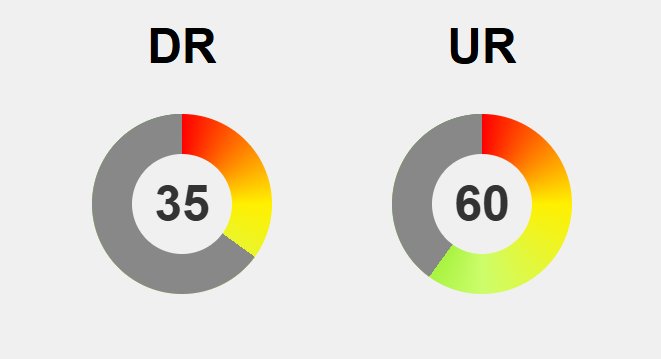Maximizing your summer tires’ lifespan without sacrificing handling requires more than just seasonal checks—it’s about establishing a proactive routine that ensures safety, performance, and cost savings. Regularly monitoring tire pressure, rotating tires, inspecting for damage, and scheduling professional inspections form the foundation of effective maintenance. But are you truly doing enough to prevent unexpected blowouts or uneven wear? As temperatures fluctuate, tires face increased risks, making attentive care crucial. Professional insights emphasize that proper wheel alignment and balancing are often overlooked yet vital for optimal grip and longevity. The challenge lies in balancing routine vigilance with the unpredictable challenges of summer driving, such as potholes and roadside hazards. When managed diligently, these habits transform your tires from potential hazards into reliable allies, offering peace of mind and smoother journeys. Are your tires ready to handle every mile with confidence, or is it time to elevate your summer tire care game?

Essential Summer Tire Care for Safety and Performance
Summer tire care isn’t just a seasonal checklist; it’s a vital part of keeping your vehicle safe and performing at its best. As temperatures rise, your tires face new challenges like increased wear, higher risk of blowouts, and handling issues if they aren’t properly maintained. Addressing these concerns now through simple, consistent habits helps ensure they stay in top shape when you need them most. Regularly checking tire pressure, tread depth, and overall condition can significantly improve safety, extend tire life, and save money in the long run.
Summer tires are specially designed for warm, dry, and wet conditions common during hotter months. Their rubber compounds stay flexible at higher temperatures, providing better grip and responsiveness. The tread patterns are optimized to maximize contact with the road, which enhances steering control and stability. Unlike all-season or winter tires, summer tires aren’t suitable for icy or snowy conditions, so choosing the right set and maintaining them properly is essential for safe driving.
Routine maintenance is the foundation of effective summer tire care. Checking tire pressure once a month—more if weather varies significantly—is simple but crucial. Hot weather causes the air inside tires to expand, risking overinflation, while cooler nights can lead to pressure drops. Using a reliable gauge and adjusting to your vehicle manufacturer’s recommended PSI keeps your tires responsive, promotes even wear, and reduces the risk of blowouts during the hottest months. Alongside pressure checks, rotating your tires every 5,000 to 7,000 miles helps promote even tread wear, ensuring consistent handling and longer-lasting tires.
Visual inspections are equally important. Regularly look for cuts, punctures, cracks, or embedded debris that could weaken your tires. Pay special attention to tread depth—if it’s worn below 2/32 of an inch, it’s time for replacement. Sidewall damage like bulges or cracks signals internal issues that could lead to sudden failures. Catching these signs early can prevent dangerous blowouts and costly repairs, making routine inspections a simple yet effective safety net.
Proper wheel alignment and balancing are often overlooked but are essential for maintaining good handling and even tire wear. Misaligned wheels cause uneven tread deterioration, reducing grip and responsiveness, especially in wet conditions. Unbalanced tires can cause vibrations that accelerate tire wear and affect ride comfort. If your steering wheel pulls or vibrates, it’s a sign that these adjustments are needed. Regular checks—particularly after hitting potholes or curbs—help keep your handling sharp and your tires lasting longer.
Taking care of your tires isn’t a one-time task; it’s an ongoing effort that pays off through safer driving, better performance, and cost savings. Developing a routine of pressure checks, rotations, and inspections ensures your tires remain in peak condition. This proactive approach not only protects your vehicle but also provides peace of mind during busy summer travels. When you stay attentive to your tires’ health, every mile becomes smoother, safer, and more controlled.
Core Strategies to Maximize Tire Lifespan and Handling
Keeping your tires in top shape during the summer hinges on simple, consistent habits. The most effective strategy starts with checking your tire pressure regularly—ideally once a month or more if weather conditions fluctuate. Hot days cause the air inside your tires to expand, risking overinflation, while cooler nights can lead to pressure drops. Using a reliable gauge and adjusting to your vehicle’s recommended PSI ensures your tires stay properly inflated, which boosts handling, prevents uneven wear, and reduces the risk of blowouts.
Rotating your tires every 5,000 to 7,000 miles also plays a crucial role in extending their lifespan. This process promotes even tread wear across all tires, maintaining predictable handling and maximizing grip, especially on wet roads. Regular rotations help identify early signs of uneven wear or sidewall damage, so you can address issues before they escalate into costly repairs or safety hazards.
Visual inspections should become a routine part of your summer tire maintenance. Look for cuts, punctures, cracks, or embedded debris that might weaken the tire’s structure. Check the tread depth—if it’s worn down to 2/32 of an inch or less, it’s time for a replacement. Pay attention to sidewalls; bulges or cracks here often indicate internal damage that could lead to sudden tire failure. Catching these signs early can prevent dangerous blowouts and save money on repairs.
Don’t overlook the importance of proper wheel alignment and balancing. Misaligned wheels cause uneven tread wear, which diminishes grip and steering response. Unbalanced tires can produce vibrations that accelerate deterioration and compromise comfort. If your steering wheel vibrates or pulls to one side, it’s a clear sign that these adjustments are needed. Regular checks—especially after hitting potholes or curbs—help maintain optimal handling and tire longevity.
Road hazards like potholes, curbs, and rough terrain are unavoidable at times, but avoiding them when possible can save your tires from damage. Impacts from hitting these obstacles can cause sidewall cracks, bubbles, or internal damage that aren’t always immediately visible. After encountering rough patches, take a moment to inspect your tires thoroughly. Addressing minor damage early prevents blowouts and more severe issues down the line.
Professional inspections shouldn’t be skipped. A trusted mechanic can spot subtle signs of wear or damage—like tiny cracks or irregular tread patterns—that are easy to miss. Scheduling seasonal tire checkups ensures your tires are in prime condition for summer driving. These inspections are a small but vital step toward safety, performance, and peace of mind, especially during busy travel months.
Combining these practices—pressure monitoring, rotations, inspections, and professional tune-ups—creates a strong foundation for healthy tires. When these habits become routine, they help prevent unexpected breakdowns and keep your vehicle handling smoothly through every mile of the season. Staying proactive not only extends your tires’ lifespan but also ensures safe, confident driving on summer roads.
Ultimately, maintaining your tires is about more than just quick fixes; it’s an ongoing effort that pays off in safety and savings. By staying attentive to their condition and addressing issues early, you protect yourself from surprises and keep your vehicle performing at its best. Good tire care is an investment in safer, more enjoyable summer driving, giving you peace of mind on every trip.

Practical Tips for Safe Driving and Tire Preservation
Driving safely during the summer goes beyond obeying traffic laws; it hinges on paying close attention to your tires. One of the most crucial habits is regularly checking tire pressure. Underinflated tires compromise handling, increase wear, and raise the risk of blowouts, especially as temperatures climb. Make it a point to inspect your tires once a month, or more often during temperature swings, using a reliable gauge. Keeping your tires inflated to the manufacturer’s recommended PSI ensures better grip, even wear, and a safer ride.
Smooth driving habits also protect your tires over the long haul. Accelerating gradually, braking gently, and steering smoothly reduce unnecessary stress on your tires and suspension. Avoid sharp turns or sudden maneuvers that can lead to uneven wear or tire damage. These small adjustments not only extend tire life but also improve overall safety, providing a more comfortable and controlled driving experience.
Regular visual inspections should become part of your routine. Look for cuts, punctures, cracks, or embedded debris that could weaken the tire’s structure. Check the tread depth—if it’s worn below 2/32 of an inch, replacing the tire is essential. Examine the sidewalls for bulges or cracks, which indicate internal damage that might cause a blowout. Catching these issues early prevents dangerous failures and costly repairs, making safety your top priority.
Proper wheel alignment and balancing are often overlooked but are vital for maintaining good handling and even tire wear. Misaligned wheels cause uneven tread deterioration, reducing grip and responsiveness. Unbalanced tires can cause vibrations, leading to faster deterioration and discomfort. If your steering wheel vibrates or pulls to one side, it’s time for a professional check. Regular adjustments help keep your vehicle responsive and your tires lasting longer.
Road hazards like potholes, curbs, and rough terrain are unavoidable at times. Hitting them can cause sidewall cracks, bubbles, or internal damage that’s not always immediately visible. If you encounter rough patches, inspect your tires thoroughly afterward. Early detection of minor damage can prevent blowouts and more serious issues down the line, protecting you and your wallet.
Don’t skip scheduled professional inspections. A trusted mechanic can spot subtle signs of wear or damage—like tiny cracks or uneven tread—that you might miss. Regular tune-ups ensure your tires are in peak condition to handle summer roads, especially during long trips or busy commutes. Investing in these inspections reduces the risk of surprises and keeps your vehicle performing safely.
Staying alert and proactive with tire care isn’t complicated. Checking pressure, rotating tires, inspecting for damage, and seeking professional advice form a solid routine. When you treat your tires with consistent attention, you enhance safety, extend their lifespan, and enjoy more confident driving. These habits help you stay ahead of problems, ensuring every mile is smooth, safe, and controlled on summer roads.
By following these practical tips, you can maximize the lifespan and safety of your tires throughout the summer months. For additional guidance on tire maintenance and to find trusted professionals near you, consider visiting Tire Maintenance. Staying informed and proactive will ensure your driving remains safe and your tires perform at their best on every journey.
Expert Insights for Effective Summer Tire Maintenance
Professional experts consistently emphasize that proactive tire maintenance is essential for safe and reliable summer driving. Regularly checking your tire pressure, especially during temperature fluctuations, is a simple yet critical step—over- or under-inflation can greatly affect grip, tire wear, and overall safety. Using a high-quality gauge and sticking to your vehicle manufacturer’s recommended PSI ensures your tires respond predictably and wear evenly, which becomes especially important as heat causes air inside the tires to expand.
Wheel alignment and balancing are often overlooked but are fundamental to maximizing tire lifespan and maintaining precise handling. Misaligned wheels lead to uneven tread wear, reducing grip and steering accuracy, while unbalanced tires can cause vibrations that accelerate deterioration. Regular checks—particularly after hitting potholes or curbs—prevent these issues from developing, keeping your ride smooth and your tires lasting longer.
Routine inspections for damage are just as vital. Small cuts, cracks, or embedded debris might seem minor but can weaken the tire’s structure, increasing the risk of blowouts. Checking tread depth regularly and replacing tires when they reach 2/32 of an inch helps avoid sudden failures. Pay close attention to sidewalls; bulges or cracks often point to internal damage that could lead to catastrophic tire failure if left unchecked.
Experts also stress that scheduling seasonal inspections with trusted mechanics can spot subtle signs of wear or damage early on. These professional assessments go beyond visual cues, uncovering issues like uneven tread patterns or internal cracks that might not be visible to the untrained eye. Investing in these checkups ensures your tires are in prime condition to handle the demands of summer roads, especially on longer trips or busy commutes.
Good tire care isn’t just about reacting to problems—it’s about preventing them. Maintaining proper pressure, ensuring correct alignment and balance, and addressing damage promptly create a strong foundation for safe, efficient driving. When these practices are part of your routine, you reduce the likelihood of surprises and enjoy greater confidence in every mile.
The advice from professionals is clear: stay proactive. Small routines like pressure checks, rotations, and inspections save you money and enhance safety. They help your tires perform at their best, providing reliable grip and handling even under the demanding conditions of summer driving. These habits not only extend tire life but also give you peace of mind, knowing your vehicle is ready for whatever the road throws your way.
Hitting road hazards such as potholes or curbs can cause unseen internal damage. Regular inspections after such impacts are crucial to catch issues early before they escalate into serious problems. Early detection of minor damage prevents blowouts and keeps your journey safe. Making these checks part of your seasonal routine ensures your tires remain resilient and your driving stays secure.
By trusting expert insights and integrating routine maintenance, you can significantly reduce the chances of roadside surprises. Proper tire care isn’t complicated—it’s a small commitment that yields big safety and performance benefits. With professional guidance and consistent habits, your tires will keep you moving smoothly, confidently, and safely through every summer mile.

Proactive Tire Care for Safer, Smoother Summer Journeys
Taking care of your summer tires isn’t a one-and-done task; it’s an ongoing commitment that pays off in safety, performance, and savings. Establishing a routine of checking tire pressure, inspecting tread and sidewalls, and scheduling professional tune-ups keeps your tires in peak condition when you need them most. These simple habits help prevent unexpected blowouts, uneven wear, and handling issues, giving you confidence on every road.
Staying attentive to your tires’ condition extends their lifespan and maintains optimal grip and responsiveness. Regular pressure checks, rotations, and early damage detection aren’t just maintenance chores—they’re investments in safer, more efficient driving. When these practices become second nature, you reduce surprises and ensure your vehicle handles smoothly through every mile of summer.
Looking ahead, technology offers new tools that make tire maintenance easier than ever. Smart sensors and automated systems can provide real-time data on tire health, alerting you to issues before they turn into emergencies. Embracing these innovations enhances your ability to stay ahead of wear and damage, making proactive care even more practical and effective.
Remember, proactive tire maintenance isn’t about waiting for problems; it’s about preventing them. Regular inspections, pressure monitoring, and timely replacements create a solid foundation for safe driving. By making these habits part of your routine, you protect yourself from roadside surprises and enjoy greater peace of mind, knowing your tires are ready for whatever the road brings.
Investing a little time now in consistent tire care sets the stage for safer, more enjoyable summer miles. The effort pays off through better handling, longer-lasting tires, and fewer costly repairs. When you treat your tires with care and attention, every trip becomes smoother, safer, and more controlled—because every mile should be a confident, worry-free journey.






